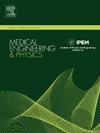Mechanical properties of decellularized porcine esophagus: Preliminary results
IF 2.3
4区 医学
Q3 ENGINEERING, BIOMEDICAL
引用次数: 0
Abstract
Esophageal tissue engineering is a promising approach to create an esophageal substitute after surgical resection of a part of the organ. Regeneration of esophageal tissue may be achieved using some synthetic or biological scaffolds. In the present study, scaffolds are obtained through the decellularization of porcine esophagi. In view of future implantation, it is important to test the mechanical properties of the decellularized matrices and to compare them with the data obtained for native pig esophagi. Results of longitudinal and circumferential traction experiments as well as inflation and burst tests are presented. The results obtained for the compliance of porcine decellularized matrices are novel. It is concluded that the decellularized matrices are suitable for use as esophageal substitutes.
脱细胞猪食道的力学特性:初步结果
食管组织工程是在切除部分食道器官后制造食道替代品的一种很有前途的方法。食道组织的再生可以用一些合成或生物支架来实现。在本研究中,支架是通过猪食管的脱细胞获得的。考虑到未来的植入,测试脱细胞基质的力学性能并将其与天然猪食管的数据进行比较是很重要的。给出了纵向和周向牵引试验以及充气和爆破试验的结果。结果表明,猪脱细胞基质的顺应性是新颖的。结果表明,脱细胞基质适合作为食管代用品使用。
本文章由计算机程序翻译,如有差异,请以英文原文为准。
求助全文
约1分钟内获得全文
求助全文
来源期刊

Medical Engineering & Physics
工程技术-工程:生物医学
CiteScore
4.30
自引率
4.50%
发文量
172
审稿时长
3.0 months
期刊介绍:
Medical Engineering & Physics provides a forum for the publication of the latest developments in biomedical engineering, and reflects the essential multidisciplinary nature of the subject. The journal publishes in-depth critical reviews, scientific papers and technical notes. Our focus encompasses the application of the basic principles of physics and engineering to the development of medical devices and technology, with the ultimate aim of producing improvements in the quality of health care.Topics covered include biomechanics, biomaterials, mechanobiology, rehabilitation engineering, biomedical signal processing and medical device development. Medical Engineering & Physics aims to keep both engineers and clinicians abreast of the latest applications of technology to health care.
 求助内容:
求助内容: 应助结果提醒方式:
应助结果提醒方式:


